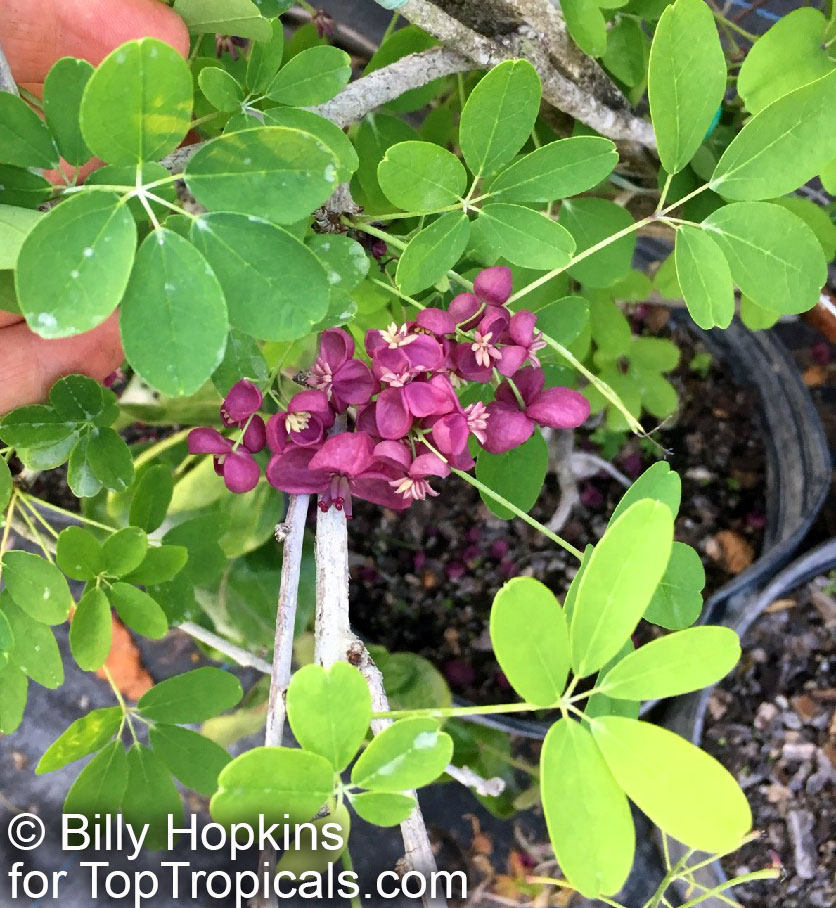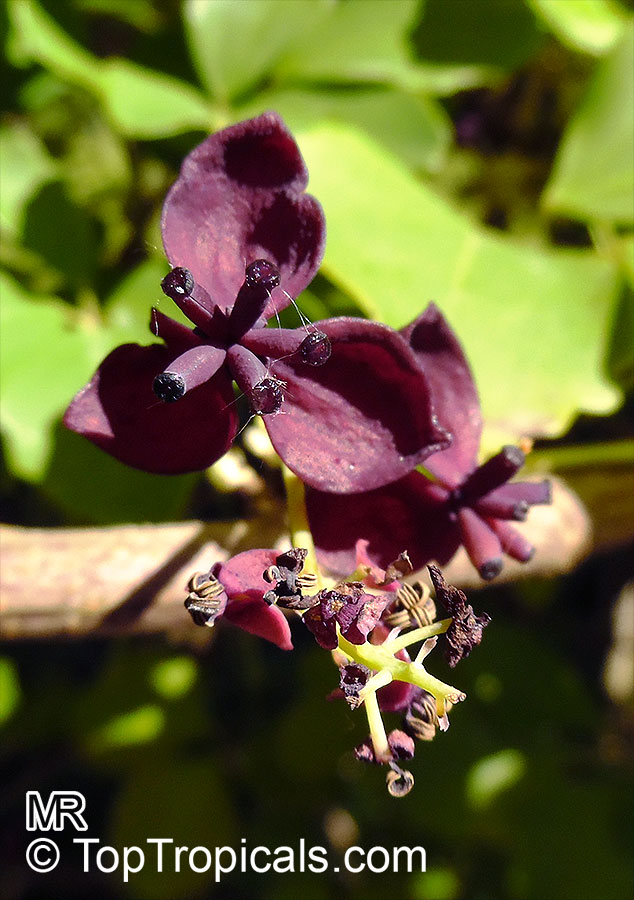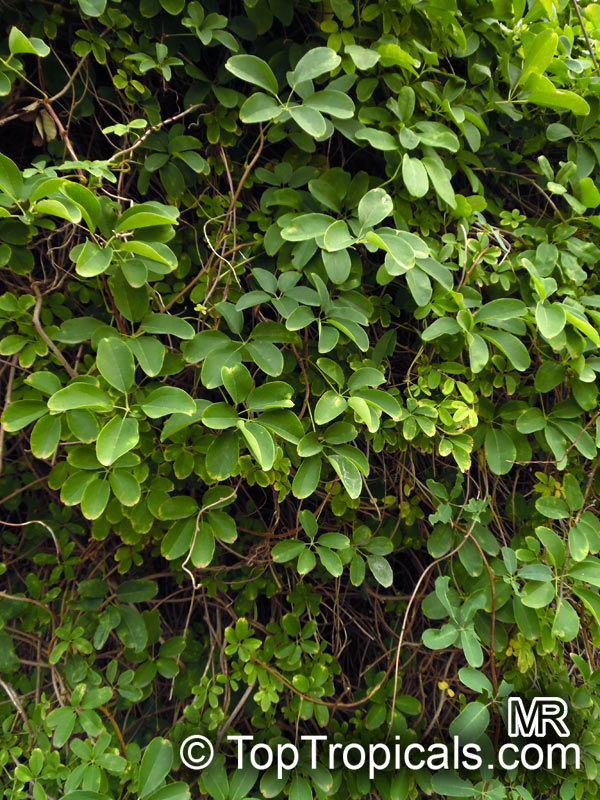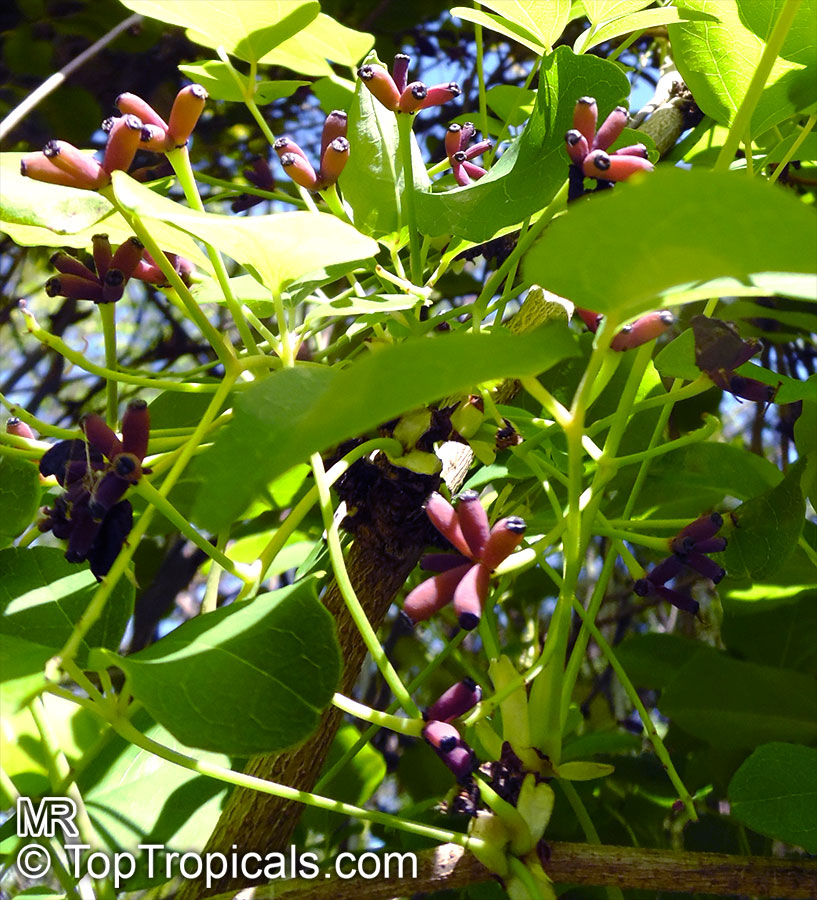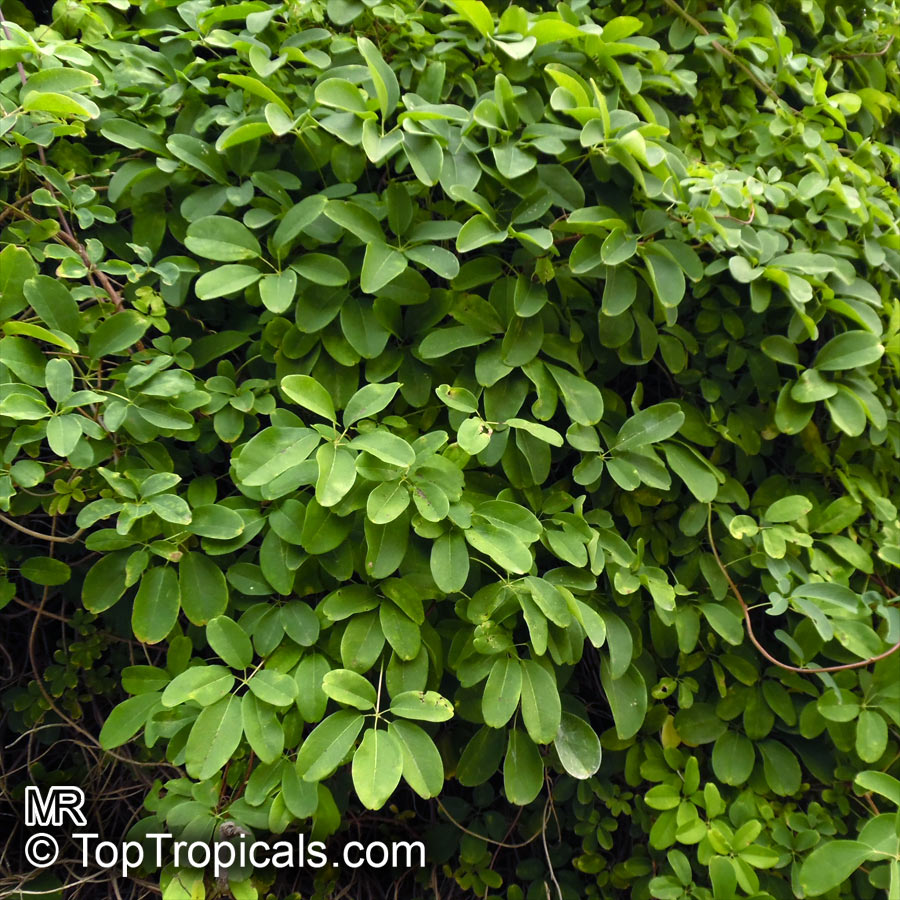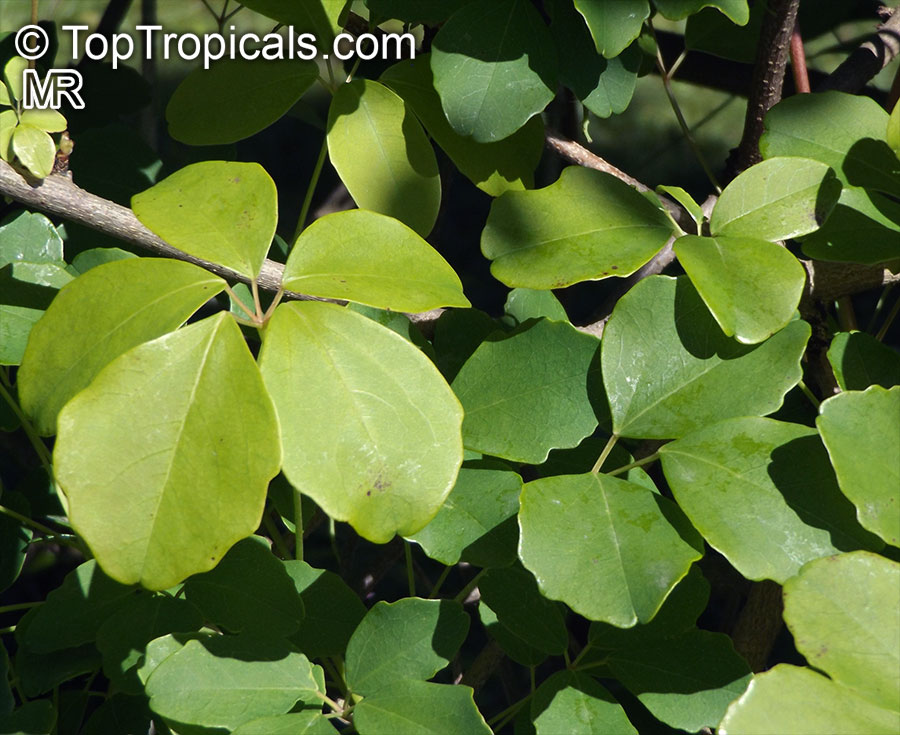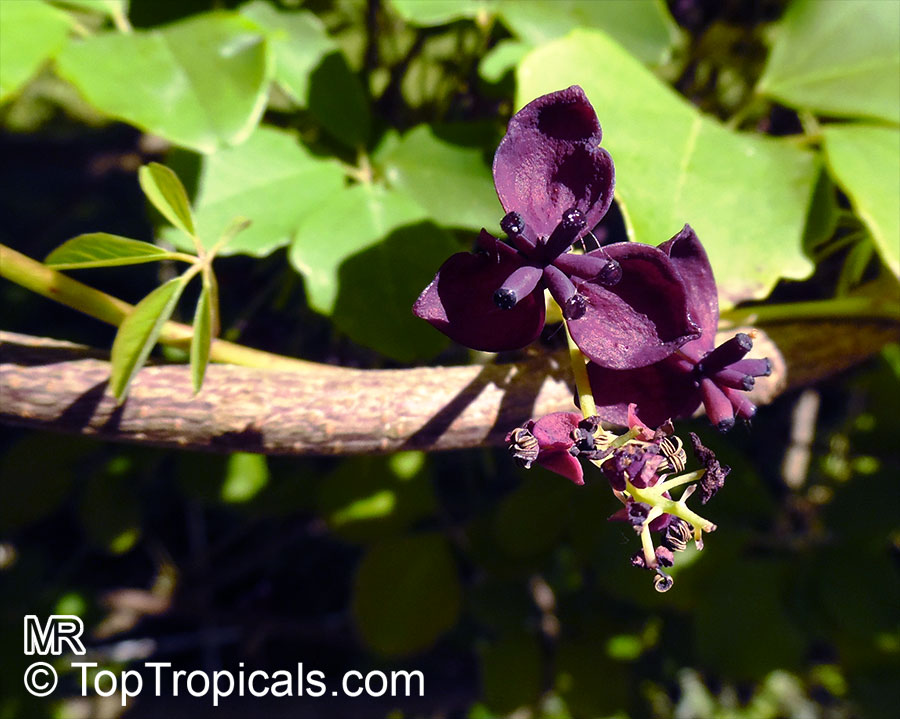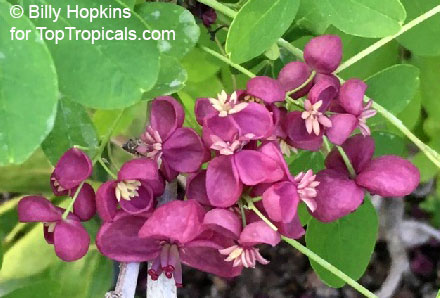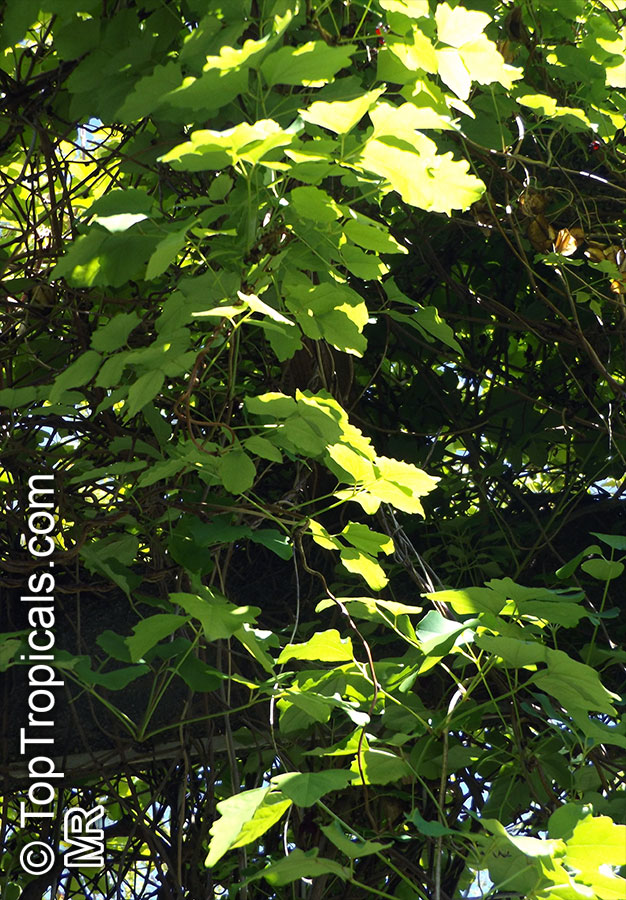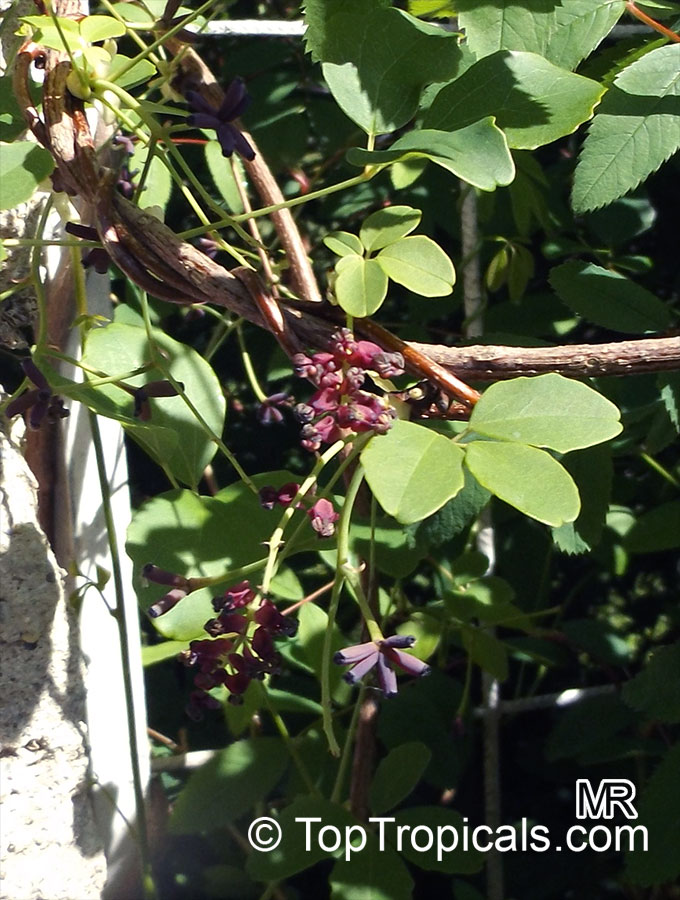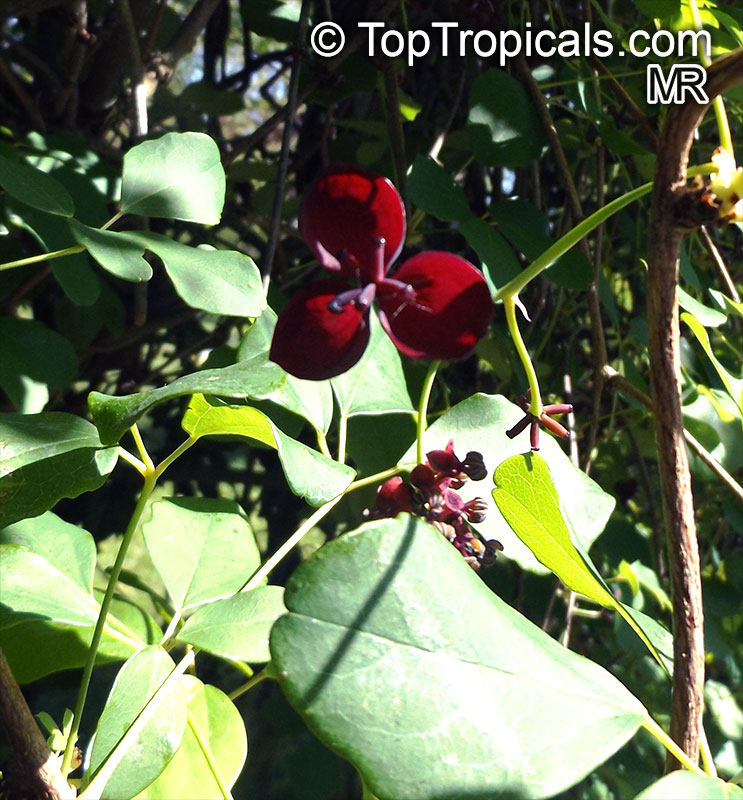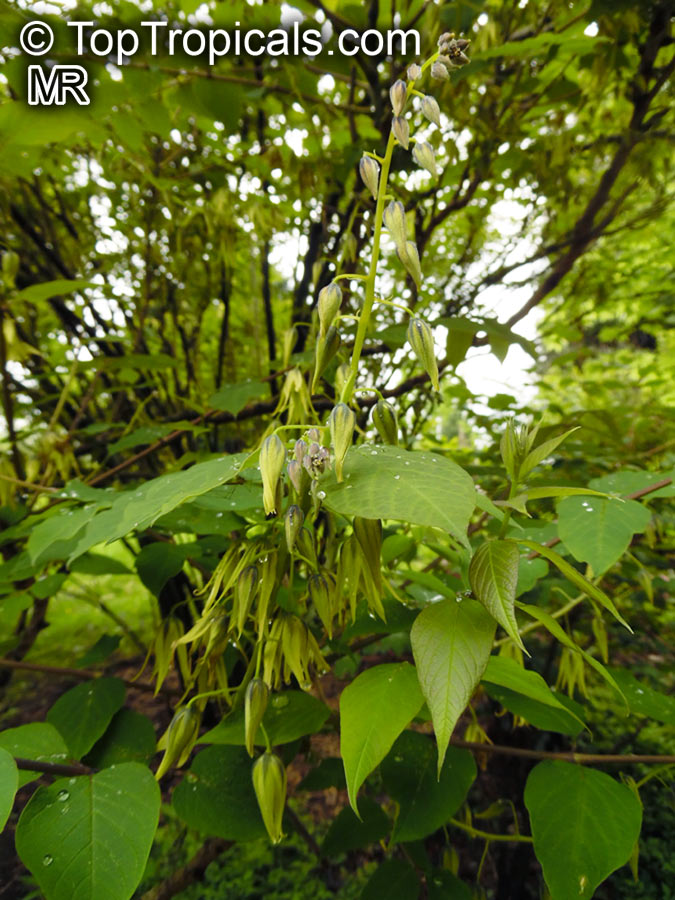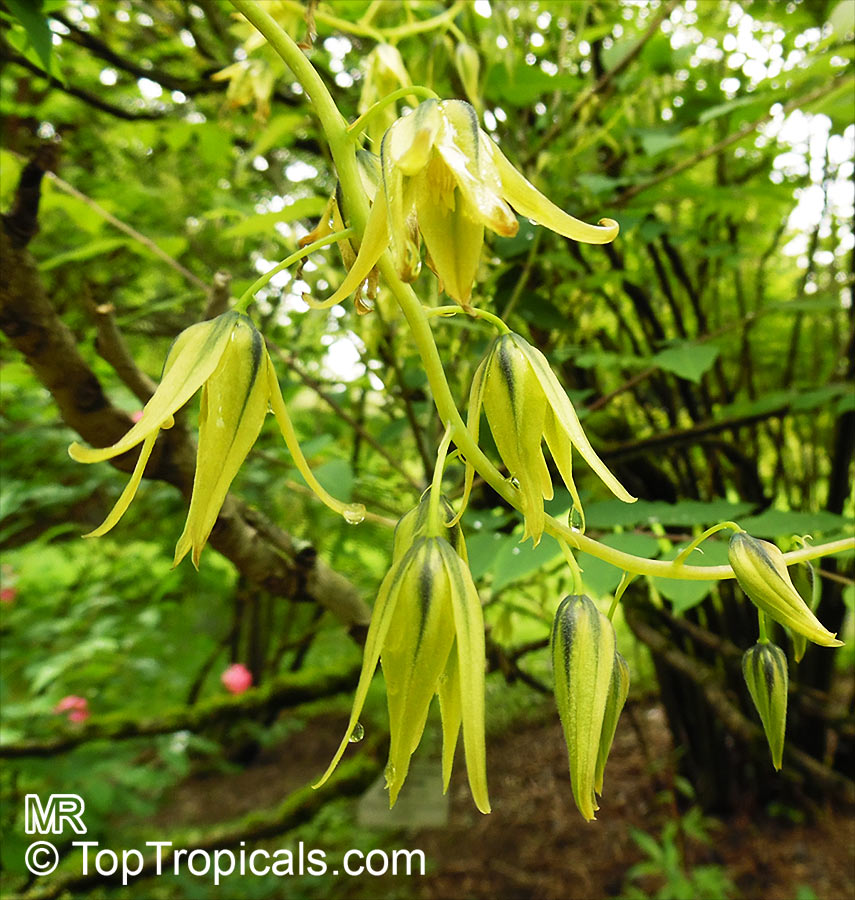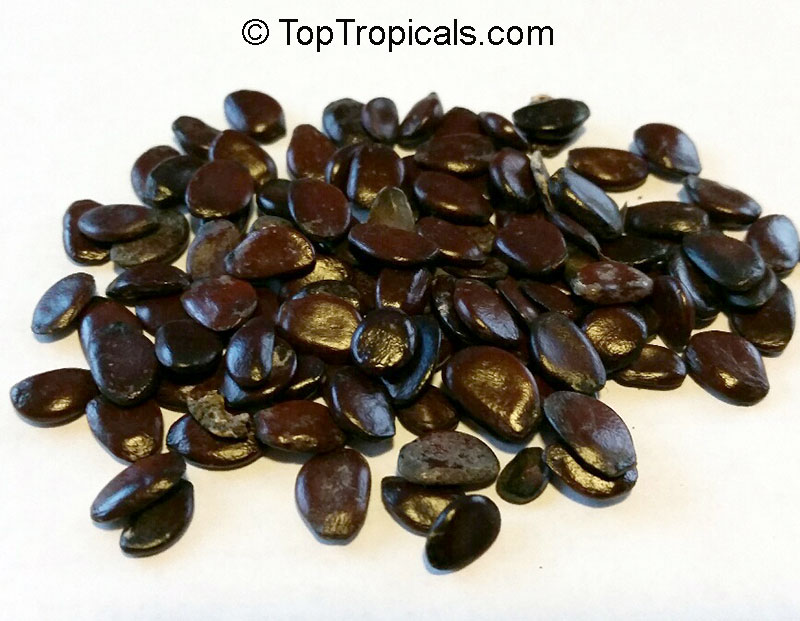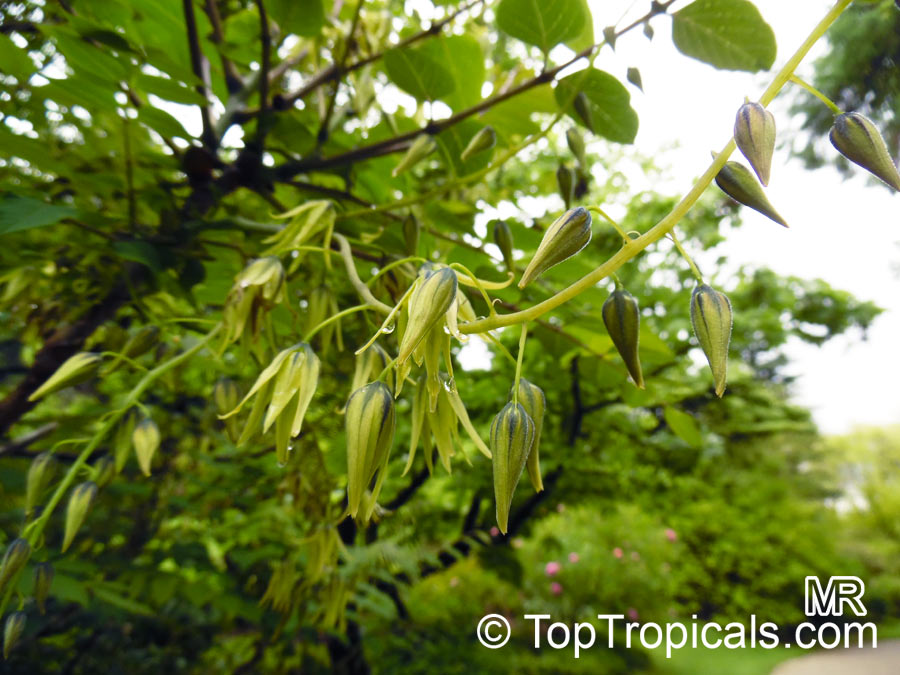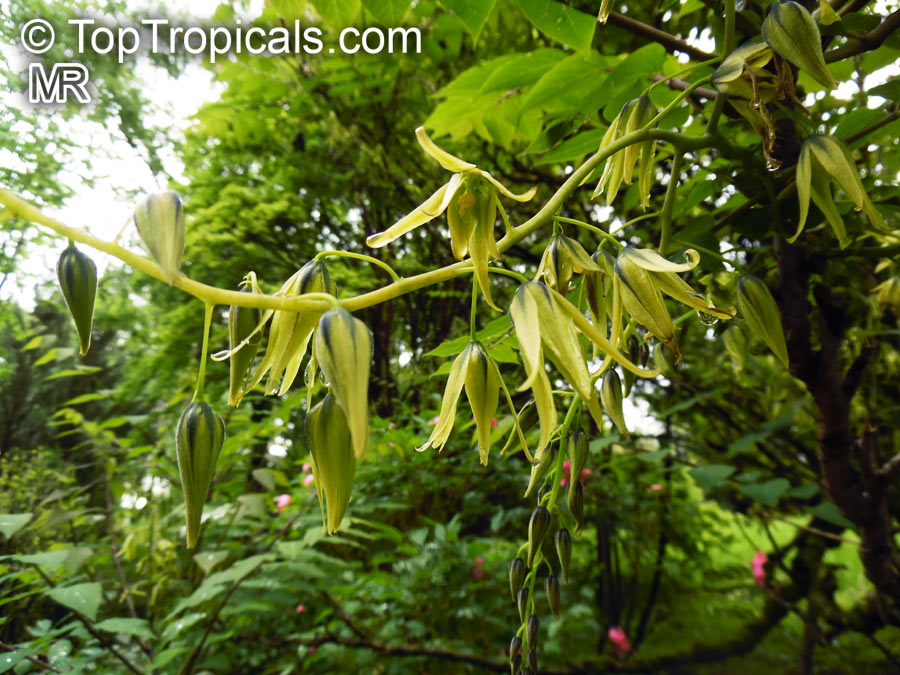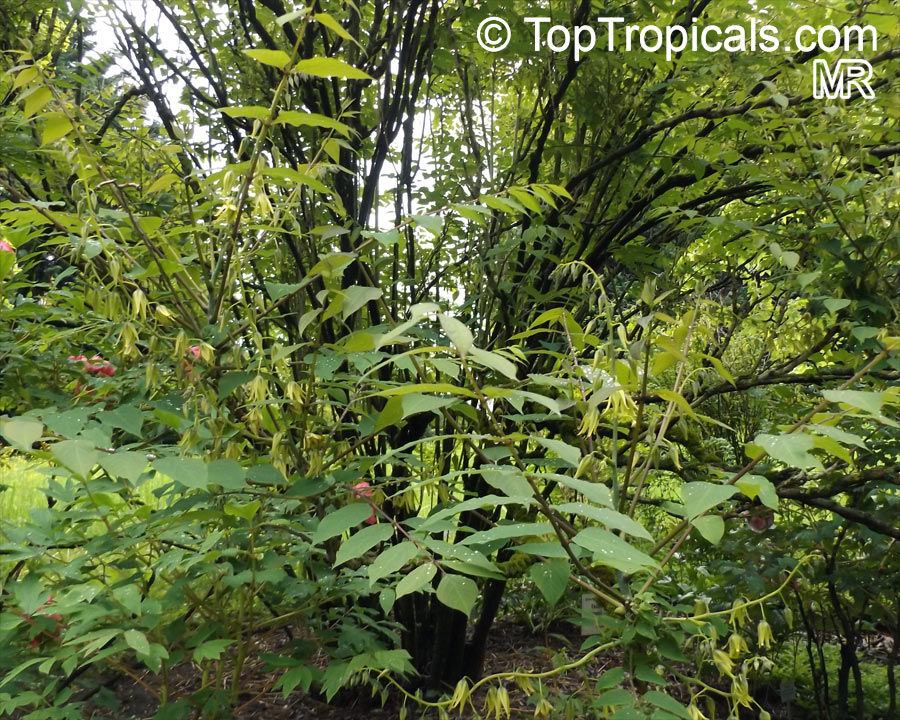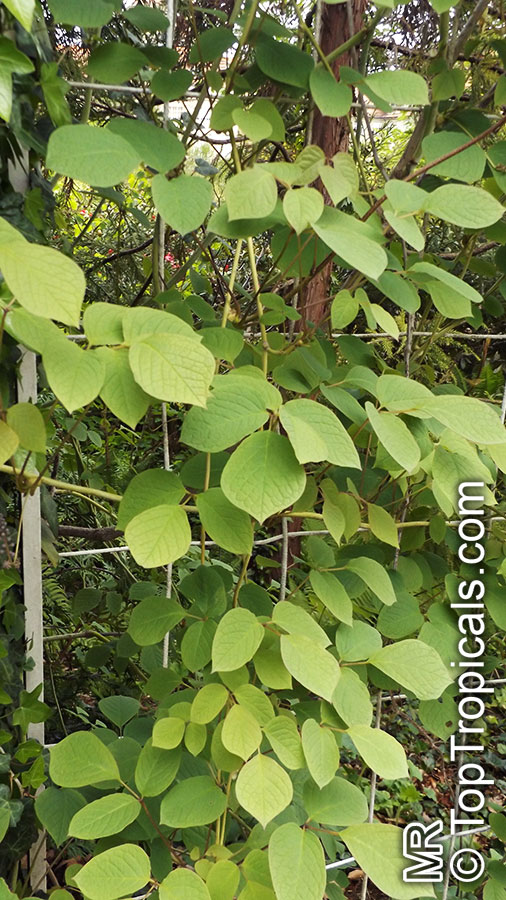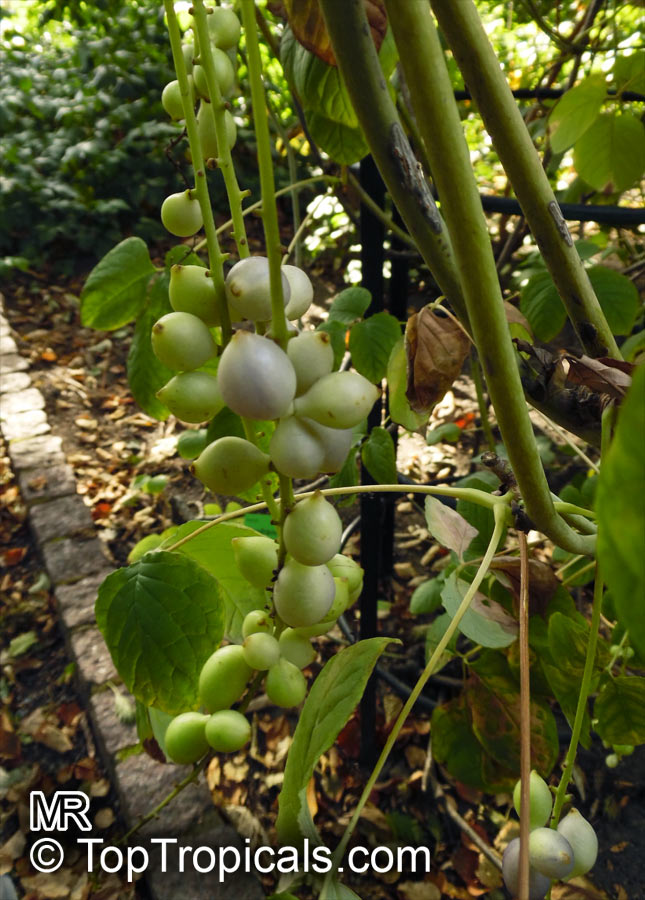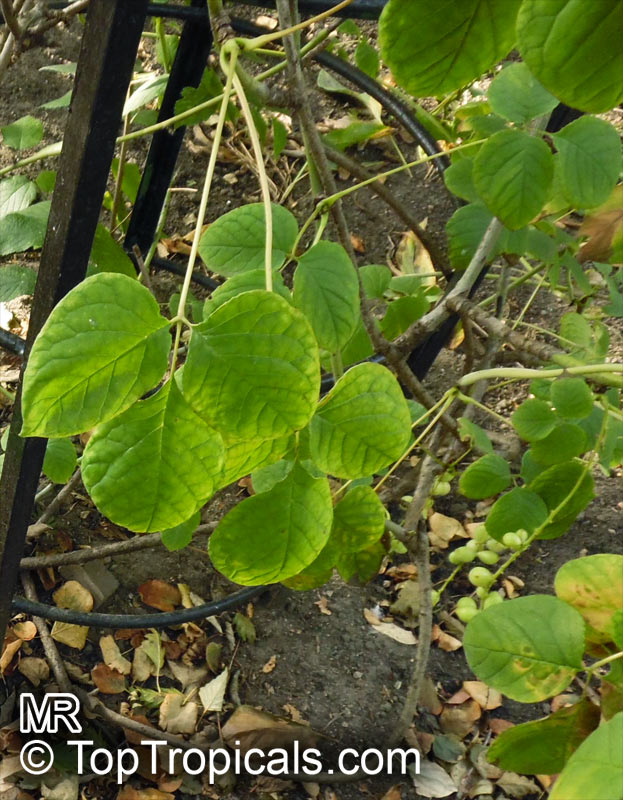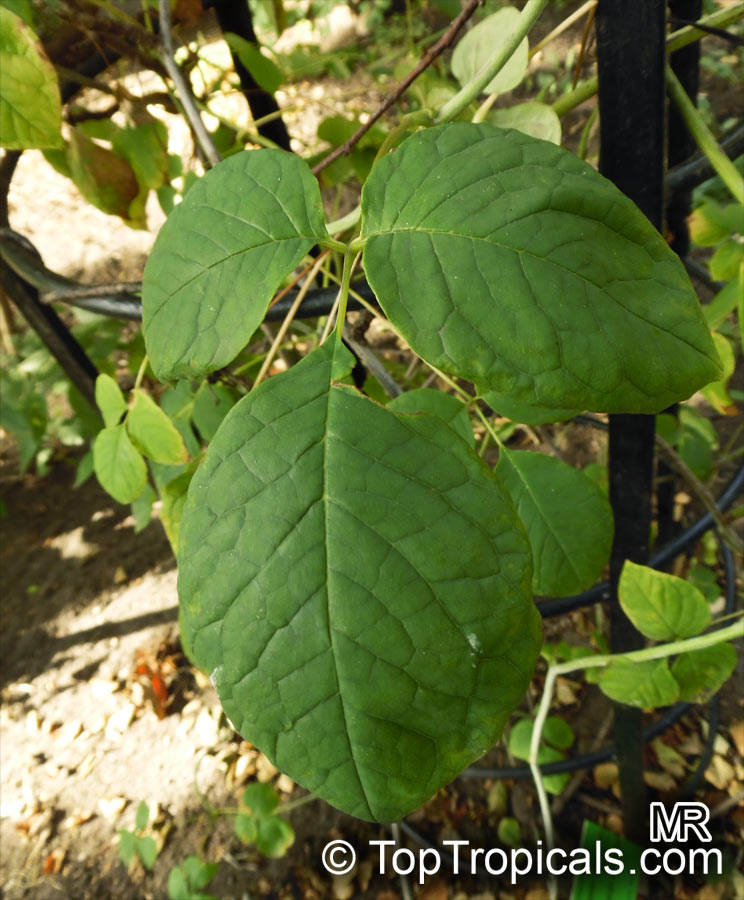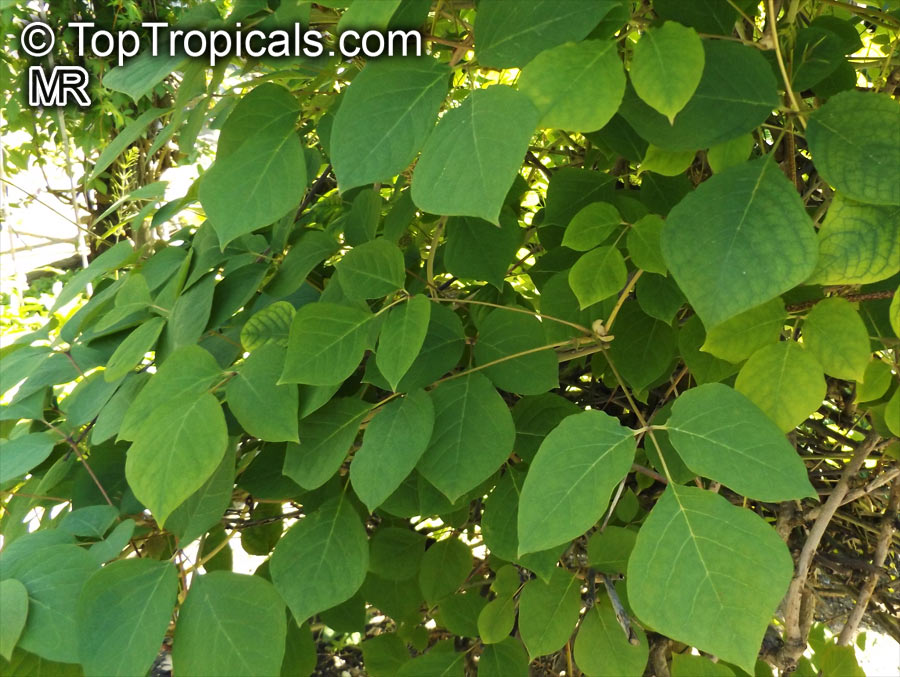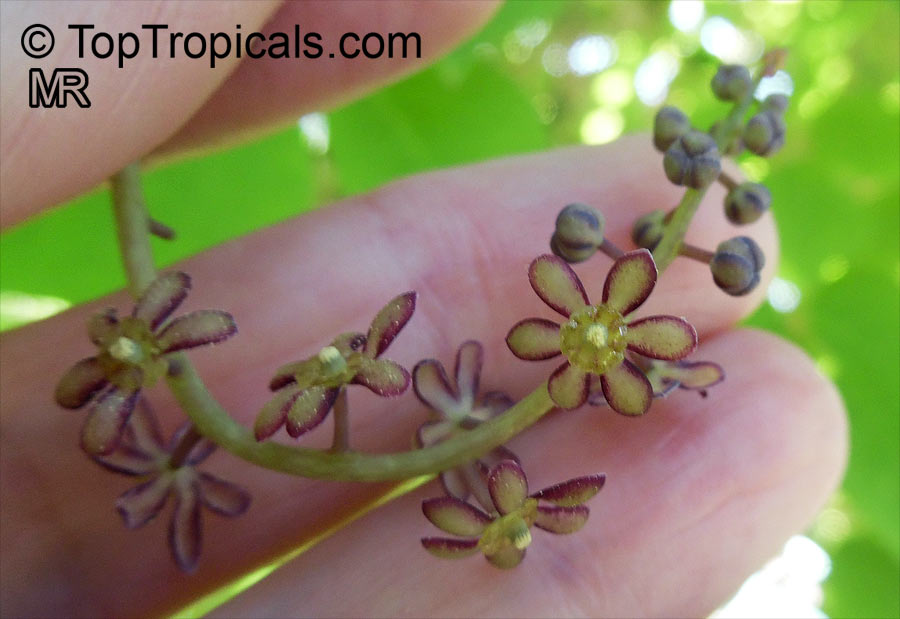Lardizabalaceae - Botanical Family
Top Tropicals Plant Encyclopedia
| Number of plants found: 4 |
Botanical name: Akebia quinata
Common names: Chocolate Vine, Five-leaf Akebia
Family: Lardizabalaceae
Origin: Japan, China










Akebia quinata grows to 10 m (30 ft) or more in height and has compound leaves with five leaflets. The flowers are clustered in racemes and are chocolate-scented, with three or four sepals. The fruits are sausage-shaped pods which contain edible pulp.
Plants are evergreen in mild winters. Since the chocolate vine growth rate is so fast, it makes an excellent cover for arbors, trellises, pergolas or fences.
Botanical name: Akebia trifoliata
Common names: Chocolate Vine, Three-leaf Akebia
Family: Lardizabalaceae
Origin: China, Korea, Japan









Akebia trifoliata is a deciduous Climber growing to 9 m (29ft 6in) at a fast rate.
Flavor varies greatly in akebias, even within the same species, with some individuals displaying a complex flavor profile resembling a mixture of banana, passionfruit and litchi, with others being mild, or even insipid.
Botanical name: Decaisnea fargesii
Common name: Dead Man's Fingers
Family: Lardizabalaceae
Origin: Eastern Asia









Decaisnea, known commonly as dead man's fingers, is a genus of flowering plant in the family Lardizabalaceae. It is native to eastern Asia, from China west to Nepal and south to Myanmar.
Decaisnea are deciduous shrubs or small trees. The flowers are produced in drooping panicles. Each flower has greenish-yellow sepals and no petals. The fruit is a soft greenish-yellow to blue-black pod-like follicle and contains a transparent, glutinous, jelly-like pulp containing numerous flat black seeds about a centimeter wide. The pulp is edible. The flavor of D. fargesii fruit pulp has been described as sweet and similar to watermelon, and the texture described as "gelatinous".
Decaisnea is grown as an ornamental plant for its foliage and decorative fruit, bright blue in many cultivated specimens. Most plants in cultivation derive from Chinese seed and are commonly grown under the name D. fargesii. The plants are successfully grown in cooler temperate climates, and in fertile, well-drained soil. They are tolerant of temperatures as low as 5°F.
Botanical name: Sinofranchetia chinensis
Common name: Sinofranchetia
Family: Lardizabalaceae
Origin: China








Sinofranchetia chinensis is a vigorous, hardy, deciduous Climber growing to 15 m. Small, white flowers are produced in May followed by bunches of hanging, purple fruits in October. Attractive garden plant for trellises, arbors or against walls.
Use link to repeat this search:
https://toptropicals.com/cgi-bin/garden_catalog/cat.cgi?search_op=and&keyword_op=and&language=e&family=Lardizabalaceae
&number=10&no_change_lang=1&user=tt&sale=1&first=0
